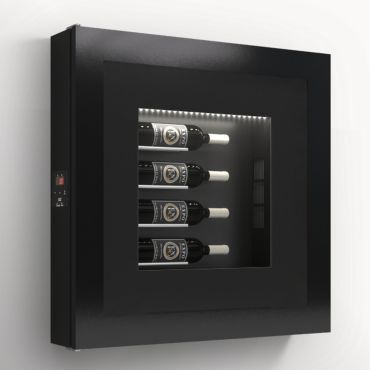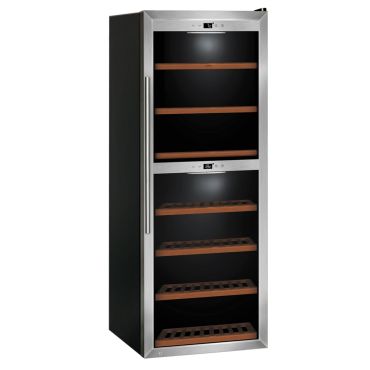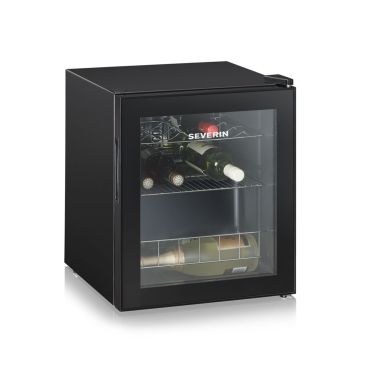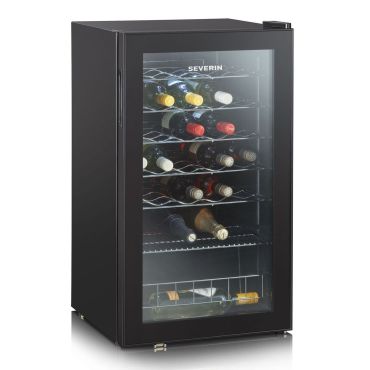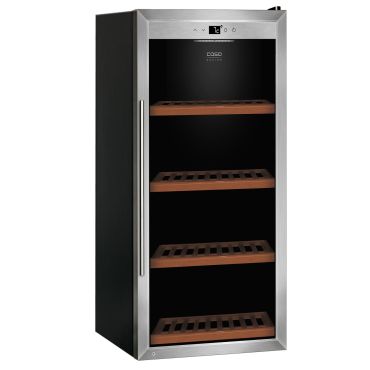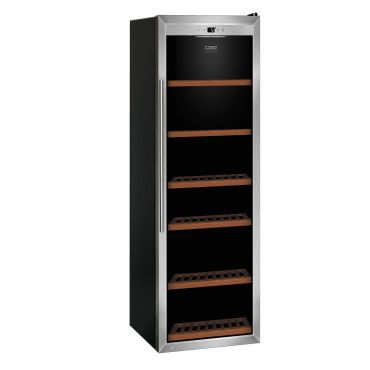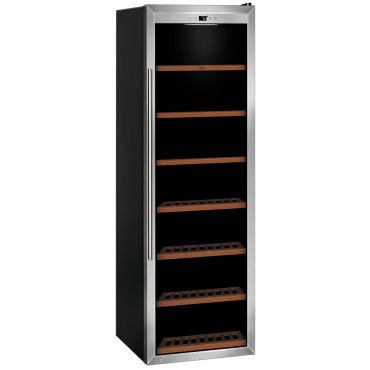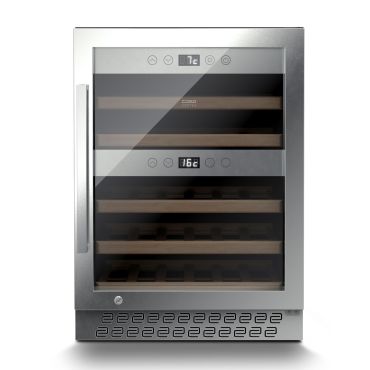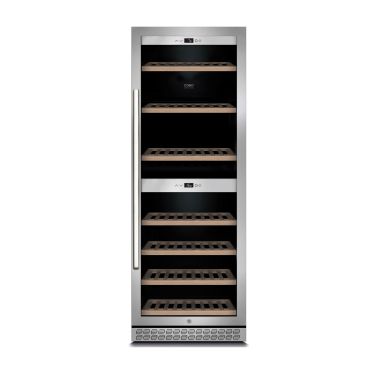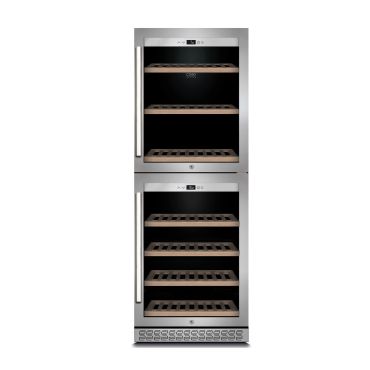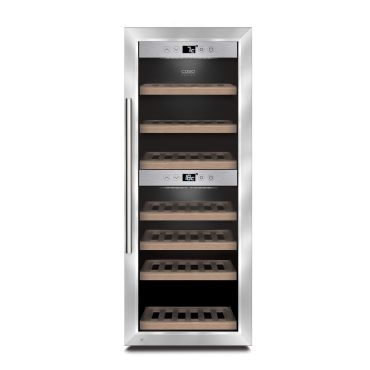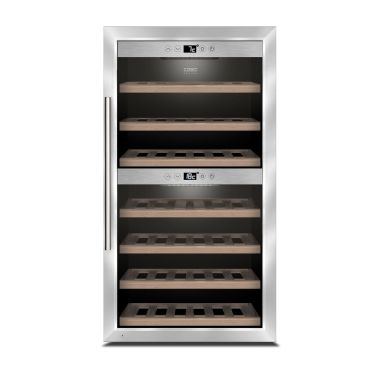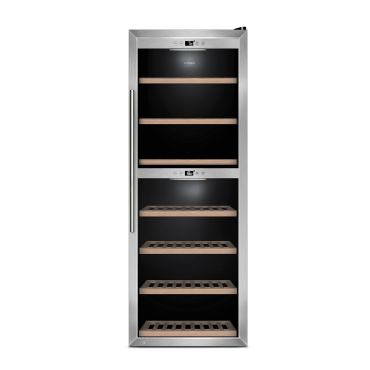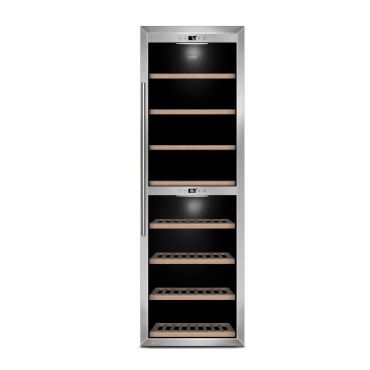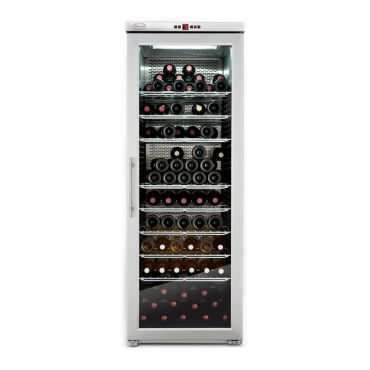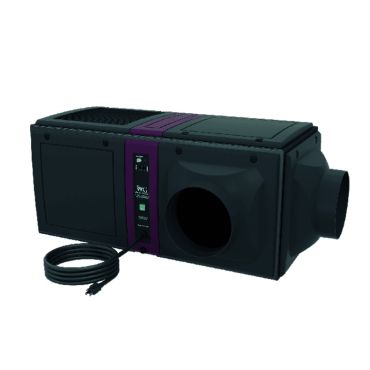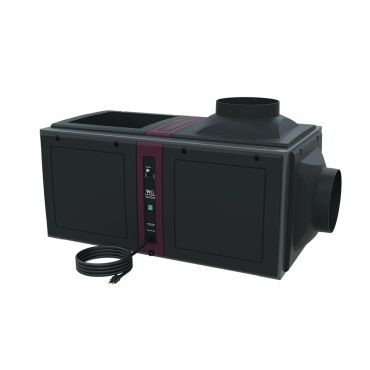Wine Cooler Guide
Why do I need a wine refrigerator?
Not every wine-lover or collector has the good fortune of having his own properly air-conditioned wine cellar. Since neither the cellars usually found in houses nor normal (kitchen) refrigerators can guarantee a consistent temperature and perfect storage conditions, a wine refrigerator is the ideal solution. Here the wine can rest at optimum temperature and humidity, in the dark and protected from vibration.
What are the advantages of a wine refrigerator?
A wine refrigerator offers a variety of advantages vis-à-vis a normal refrigerator. In it your precious wines are stored either for immediate serving or they develop, mature and age over time until they are a real pleasure to drink.
Consistent temperature:
The quality of the wine is badly affected by large fluctuations in temperature. Seasonal fluctuations in summer and winter and between day and night induce the wine to age more quickly and thereby lose quality. The wine refrigerator ensures a stable temperature, which can be set at the optimum storage temperature of between 10° and 14°C. In the case of refrigerators with two zones the desired serving temperature can usually be selected at between 5° and 20° C.
Consistent humidity:
To prevent the corks drying out and beginning to disintegrate, allowing unnecessary oxygen to reach the wine and the wine to leak out when wine is stored for a relatively long period, air humidity should be between 60% and 80%. Wine refrigerators offer constant air humidity, which is essential for storing and maturing your wine.
Low-vibration storage:
Both kitchen and wine refrigerators work with a compressor at the back of the appliance, which condenses a coolant. A thermostat measures the temperature inside the refrigerator and switches on the compressor when it becomes too warm. When the compressor is in operation this causes vibration and the refrigerator hums.
In contrast to other refrigerators a wine refrigerator works with low-vibration compressors.
Some wine refrigerators also have a fan, which moves cool air and distributes it evenly inside the refrigerator.
Small wine refrigerators with a capacity of up to 30 bottles do not work with compressors, but with the Peltier Process based on a thermoelectric principle, which causes no vibration, i.e. it works by means of an electric current, which flows between two metal conductors to regulate the temperature difference.
Protected from UV light:
Wine is best kept in the dark. Light, especially UV light, allows it to age more quickly and results in loss of taste and quality. Wine refrigerators have either solid doors or specially tinted and laminated glass doors, which allow no UV light to penetrate and thus protect the wine from harmful effects.
Glass doors are important, especially in the catering industry, to allow the wine to be displayed and visible to the customers.
Prevents odour absorption:
A wide variety of foodstuffs are stored in a normal kitchen refrigerator, including strong-smelling products, such as cheese, varieties of cabbage and heavily spiced dishes. If wine is also stored there, it can take on these smells. This is why it makes sense to store wine separately.
Wine cooler, wine storage cooler, multi-zone wine cooler: what is the difference?
The three terms, wine cooler, wine storage cooler and multi-zone wine cooler are used for all appliances, which are used for cooling wine.
A frequently used definition states that a wine storage coolerand a wine cooler have only one temperature zone and therefore are useful for the long-term storage of wine.
Conversely, a multi-temperature wine cooler cools white wine and red wine to serving temperature separately in two or more zones.
In practice, however, these terms are often used at will and even the manufacturers no longer make an exact distinction. Therefore the term, wine cooler is usually used as a generic term.
In addition, there are wine refrigerators, which also have a heating function. This makes sense, if the wine cooler stands in a room, where the ambient temperature (e.g. in winter) is lower that the temperature, to which the wines should be cooled.
Models of wine coolers with one or more zones
Wine storage cooler/ wine cooler with one temperature zone
Single zone wine coolers are most suitable for the long-term storage and maturation of high-quality wines and provide a constant temperature zone. As a rule they can be individually set at between 5° and 20°C. Air humidity is between 75% and 85%.
Of course, they can be used to store either only white wine, for instance, at a temperature of 8° - 10°C or only red wine at 15° - 18°C in order to reach the perfect temperature for serving, if you intend to drink the wine in the near future.
Multi-temperature wine cooler/wine cooler with two or more temperature zones
Double zone or multi zone wine coolers have separate compartments for cooling different wine varieties and sparkling wine or champagne at the perfect temperature for drinking or serving, so that you always have your favourite tipple to hand and ready for consumption.
In the lower cooling zone you can set the temperature for red wine at between 14° and 20°C, for example. Your white wines or sparkling wine and champagne are then stored in the upper cooling zone at 8° - 12°C.
Multi zone wine coolers can have three cooling zones. Other models have a temperature profile; for example, this means that the temperature is a cold 7°C in the upper compartment and in the lower compartment it remains warmer at a temperature of up to 15°C, for example.
A wine cooler for any number of bottles
An important consideration in purchasing a wine cooler is the number of bottles to be stored in it. The capacity required should not be under-estimated, because your stock of wine may increase for a variety of reasons. Mind you, not all wines should be cooled. Young wines, purchased for drinking within a very short time, can be stored in a wine rack in a cellar or living room and when needed, single bottles placed in a normal refrigerator to reach the required temperature for drinking.
If you want to cool only a small stock of wine or if you have limited space, a small wine cooler with capacity for up to 30 bottles is recommended. The smallest models can easily be fitted into a space in the kitchen for example.
Professional and luxury wine coolers are used in restaurants, wine stores, wine-growing estates or by design-conscious, private wine collectors with a large number of bottles. We offer a wide range of luxury designs, which put their stamp on every wine cellar and which guarantee the best storage conditions for your bottles.
Built-in and under-counter models
If you want your wine cooler to blend harmoniously with your kitchen, for instance, select one of our built-in or under-counter wine coolers. Under-counter wine coolers are, as the name suggests, installed under a working surface and are aligned with the kitchen front, making these wine coolers part of your kitchen equipment. As a rule they hold a small to moderate number of bottles. These wine coolers are not used to store the wine, but to cool it to serving temperature. This saves you a trip to the cellar and you have your favourite wine always to hand and ready to be enjoyed straight away. Built-in wine coolers can be integrated into a recess. Depending on the amount of space available or the required number of bottles, medium size to large wine coolers can be installed. In contrast to free-standing wine coolers the air outlet for air circulation is at plinth level on the front of all wine coolers designed to be built-in or installed under a working surface.
In all other coolers the warm air is expelled at the back or at the sides of the appliance. This warm air must escape and therefore free-standing models must also be located with sufficient free space around them.
➔ Here you can find more wine coolers and cooling systems

